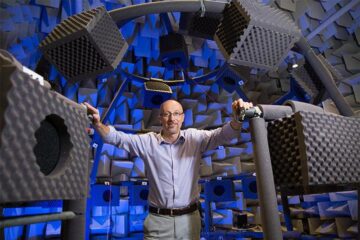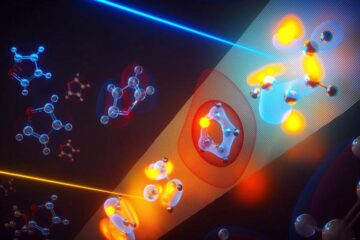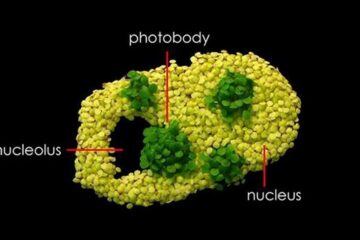INCF and the Allen Institute for Brain Science Collaborate to Improve Allen Brain Atlas Service in Europe

The International Neuroinformatics Coordinating Facility (INCF) and the Allen Institute for Brain Science announced today that the INCF will contribute infrastructure and support services to enhance global access to the Institute’s Allen Brain Atlas—Mouse Brain. Publicly available for free to encourage widespread use and collaboration, the Allen Brain Atlas—Mouse Brain is a Web-based, genome-wide map of gene expression. It is actively used by scientists worldwide to advance research on the brain in health and disease.
Through the partnership agreement, the INCF is operating a mirror, or direct copy, of the atlas from its Secretariat in Stockholm, Sweden. The INCF will ensure the sustainability and technical maintenance of the mirror site, as well as optimal Internet connectivity, in order to guarantee the highest possible service performance and quality in Europe.
The Allen Institute is providing INCF with all content and data required for the mirror site. The Allen Brain Atlas—Mouse Brain contains expression patterns of approximately 20,000 genes mapped throughout the entire adult mouse brain, revealing where in the brain each gene is expressed, or “turned on” down to the cellular level.
“Helping brain researchers worldwide augment and accelerate their research programs is central to our mission,” said Elaine Jones, chief operating officer at the Allen Institute for Brain Science. “Providing free and easy global access to our data is, thus, a top priority for the Allen Institute. We are thrilled to work with INCF to mirror the Allen Brain Atlas—Mouse Brain in Europe and thus enhance its performance for researchers overseas.”
“The Allen Brain Atlas—Mouse Brain is a unique neuroinformatics resource”, said Jan Bjaalie, executive director of the INCF. “The INCF sees a future of highly valuable services like this becoming more and more interoperable and interlinked, to the benefit of neuroscience researchers. By entering this collaboration with the Allen Institute for Brain Science the INCF aims to play a key role in making this happen.”
Challenge and the benefits
The Allen Brain Atlas—Mouse Brain is a uniquely comprehensive source of information about gene activity in the brain. Each month, approximately 10,000 unique users from universities, research institutes, pharmaceutical companies and government laboratories, and others worldwide access the atlas. The INCF’s mirroring of the atlas aims to balance the load of the global demands and relieve the Seattle-based servers, thus allowing for faster responses to queries. Redirection to the European mirror will occur automatically and in response to traffic and load of the servers. The service should counterbalance any increases in traffic and significantly improve the efficiency of the overall services provided by the Allen Brain Atlas—Mouse Brain.
This collaboration brings together an international outreach organization, the INCF, and a U.S.-based non-profit medical research organization, the Allen Institute for Brain Science. Together, these organizations share the mission to provide new and improved resources and infrastructure intended to accelerate scientific progress towards a better understanding of the brain.
The launch of the brain atlas mirror inaugurates a three-year partnership with a main objective to extend and enhance the quality of services provided by the Allen Brain Atlas—Mouse Brain for neuroscientists within Europe. In addition, the atlas database is undeniably a valuable resource that presents opportunities for further development of tools, models and resource integration services, a key element of the INCF mission.
Technical operation and server hosting is located at the Royal Institute of Technology (KTH) in Stockholm, Sweden, an organization with strong technology expertise and advanced computer operation facilities.
Media Contact
More Information:
http://www.incf.orgAll latest news from the category: Health and Medicine
This subject area encompasses research and studies in the field of human medicine.
Among the wide-ranging list of topics covered here are anesthesiology, anatomy, surgery, human genetics, hygiene and environmental medicine, internal medicine, neurology, pharmacology, physiology, urology and dental medicine.
Newest articles

Why getting in touch with our ‘gerbil brain’ could help machines listen better
Macquarie University researchers have debunked a 75-year-old theory about how humans determine where sounds are coming from, and it could unlock the secret to creating a next generation of more…

Attosecond core-level spectroscopy reveals real-time molecular dynamics
Chemical reactions are complex mechanisms. Many different dynamical processes are involved, affecting both the electrons and the nucleus of the present atoms. Very often the strongly coupled electron and nuclear…

Free-forming organelles help plants adapt to climate change
Scientists uncover how plants “see” shades of light, temperature. Plants’ ability to sense light and temperature, and their ability to adapt to climate change, hinges on free-forming structures in their…





















